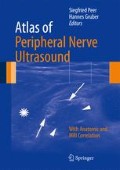Abstract
Ever since magnetic resonance imaging (MRI) got introduced in the armamentarium of medical imaging methods, it received highest interest from neuroscience. This method’s superb soft tissue contrast allowed for unprecedented imaging of nervous tissue and developed very quickly into a standard method of brain and spine imaging. Over the past few decades, MR scanners became a routine tool and a mass product within affordable cost and thus widely spread. At the same time, rapid technical advances of the method opened the door for even more detailed imaging and complete new applications: to date, scanners with a field strength of 1.5–3T can be considered standard and allow for even more detailed imaging within acceptable imaging time. Cross-sectional imaging of nervous tissue can today be combined with numerous complementary scanning schemes, such as depiction of the vasculature with various MR angiography methods, insight into the biochemistry of nervous tissue and its pathologies with spectroscopy, and observation of nerve tissue function by exploiting tissue perfusion and blood deoxygenation effects with functional MRI. A more recent development in MRI is the ability to assess the Brownian molecular motion of water molecules termed diffusion-weighted imaging (DWI). This method is routinely used for the early depiction of ischemic stroke where hypoxic injury of the neural tissue leads to a shift of free interstitial water into swollen neurons (cytotoxic edema), thus reducing the free diffusibility of water molecules which results in a drop of the calculated diffusion coefficient. This imaging method is also used to facilitate the differentiation of dense cellular tumor tissue from inflammatory or infectious changes as well as scar tissue after tumor resection. Even more interestingly, DWI is also capable of assessing the foremost direction of free Brownian molecular motion, thus permitting the visualization of the nerve bundles’ course within the spinal cord and cerebral tracts or, in case of injury, their anatomical or functional disruption.
Access this chapter
Tax calculation will be finalised at checkout
Purchases are for personal use only
References
Campagna R et al (2009) MRI assessment of recurrent carpal tunnel syndrome after open surgical release of the median nerve. AJR Am J Roentgenol 193(3):644–650
Chhabrand A, Andreisek G (2012) Magnetic resonance neurography. Jaypee Brothers Medical Publishers, New Delhi
Gambarota G et al (2012) Magnetic resonance imaging of peripheral nerves: differences in magnetization transfer. Muscle Nerve 45:13–17
Kakuda T et al (2011) Diffusion tensor imaging of peripheral nerve in patients with chronic inflammatory demyelinating polyradiculoneuropathy: a feasibility study. Neuroradiology 53(12):955–960
Maravilla KR, Bowe BC (1998) Imaging of the peripheral nervous system: evaluation of peripheral neuropathy and plexopathy. AJNR Am J Neuroradiol 19:1011–1023
Mesgarzadeh M et al (1989) Carpal tunnel: MR imaging. Part II. Carpal tunnel syndrome. Radiology 171:749–754
Shen J et al (2010) MR neurography: T1 and T2 measurements in acute peripheral nerve traction injury in rabbits. Radiology 254(3):729–738
Skorpil M et al (2007) Diffusion-direction-dependent imaging: a novel MRI approach for peripheral nerve imaging. Magn Reson Imaging 25(3):406–411
Wasa J et al (2010) MRI features in the differentiation of malignant peripheral nerve sheath tumors and neurofibromas. AJR Am J Roentgenol 194(6):1568–1574
Yamashita T et al (2009) Whole-body magnetic resonance neurography. N Engl J Med 361:538–539
Author information
Authors and Affiliations
Corresponding author
Editor information
Editors and Affiliations
Rights and permissions
Copyright information
© 2013 Springer-Verlag Berlin Heidelberg
About this chapter
Cite this chapter
Judmaier, W. (2013). Introduction to Magnetic Resonance Imaging of the Peripheral Nervous System: General Considerations and Examination Technique. In: Peer, S., Gruber, H. (eds) Atlas of Peripheral Nerve Ultrasound. Springer, Berlin, Heidelberg. https://doi.org/10.1007/978-3-642-25594-6_2
Download citation
DOI: https://doi.org/10.1007/978-3-642-25594-6_2
Published:
Publisher Name: Springer, Berlin, Heidelberg
Print ISBN: 978-3-642-25593-9
Online ISBN: 978-3-642-25594-6
eBook Packages: MedicineMedicine (R0)

